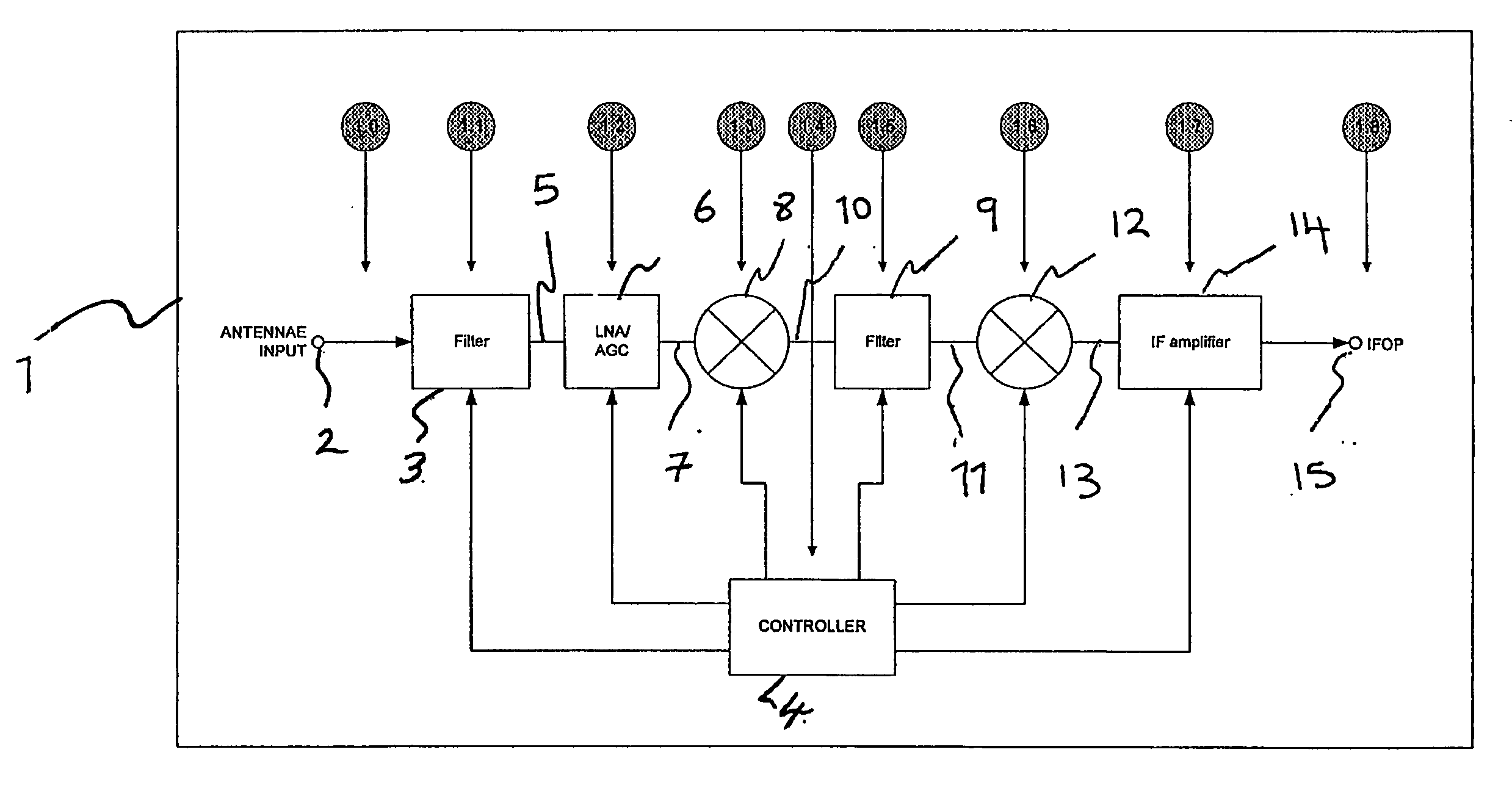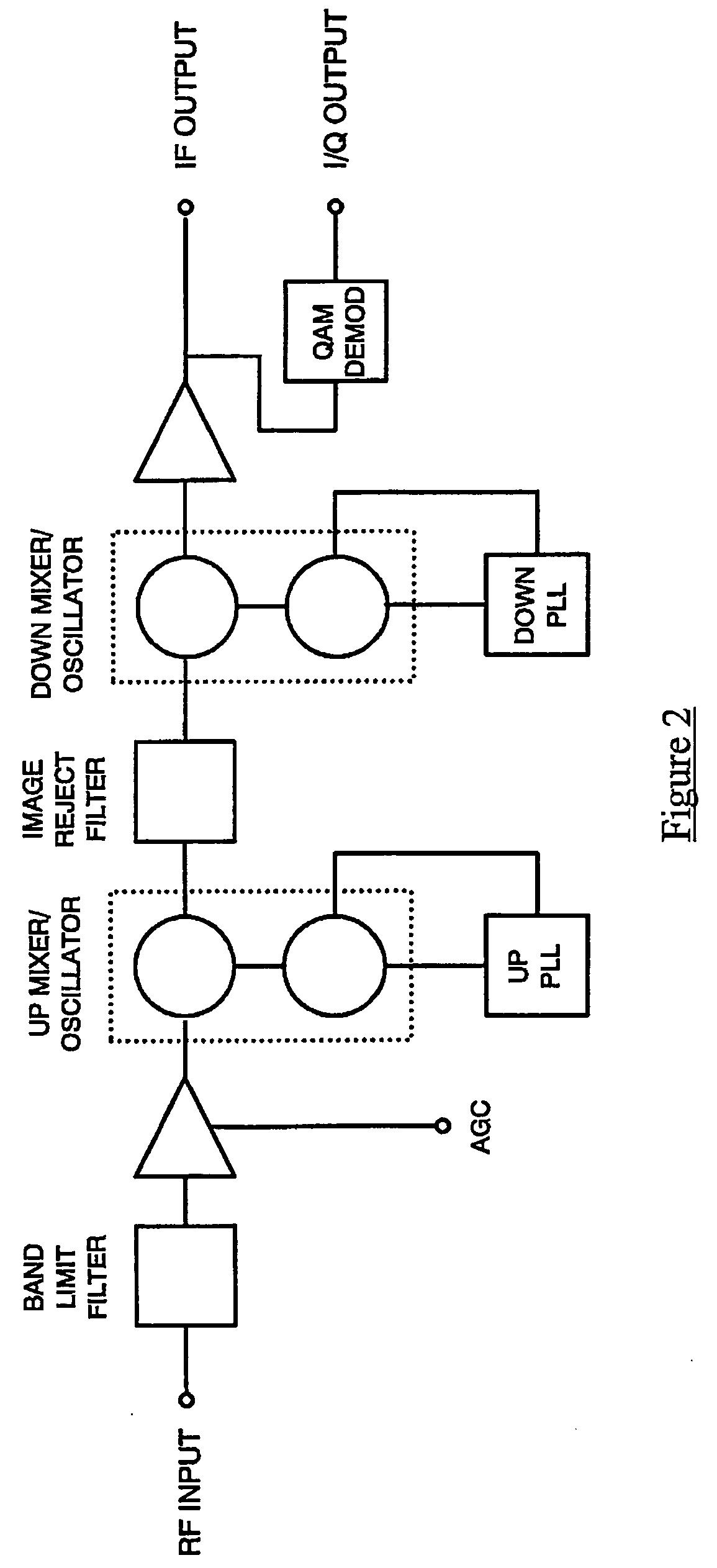Double conversion tuner
a tuner and tuner technology, applied in the field of double conversion tuners, can solve the problems of limited alignment of tracking filters, limited tuner and required local oscillator, and procedure that does not lend itself to the integration of the tuner onto the motherboard
- Summary
- Abstract
- Description
- Claims
- Application Information
AI Technical Summary
Benefits of technology
Problems solved by technology
Method used
Image
Examples
Embodiment Construction
[0036] The principles of operation of the embodiments of the invention which will be described below are as follows:
[0037] The input spectrum is broadband in nature and contains undesired interferers as well as the desired signal. These undesired may be significantly greater in amplitude than the desired signals.
[0038] The input signal is first presented to a filter stage which will pass the desired channel plus some of the adjacent channels, whilst providing attenuation to far out interferers.
[0039] The filtered spectrum is passed to the upconverter, which block upconverts the output of the filter to a high IF frequency.
[0040] A high IF filter will filter out substantially all but the desired channel and pass the filtered signal to a downconverter, which will convert the desired to a standard output IF frequency.
[0041] Either or both of the filters may be adjustable in terms of their centre frequency or bandwidth or both.
[0042] With reference to FIG. 3, a double conversion tu...
PUM
 Login to View More
Login to View More Abstract
Description
Claims
Application Information
 Login to View More
Login to View More - R&D
- Intellectual Property
- Life Sciences
- Materials
- Tech Scout
- Unparalleled Data Quality
- Higher Quality Content
- 60% Fewer Hallucinations
Browse by: Latest US Patents, China's latest patents, Technical Efficacy Thesaurus, Application Domain, Technology Topic, Popular Technical Reports.
© 2025 PatSnap. All rights reserved.Legal|Privacy policy|Modern Slavery Act Transparency Statement|Sitemap|About US| Contact US: help@patsnap.com



